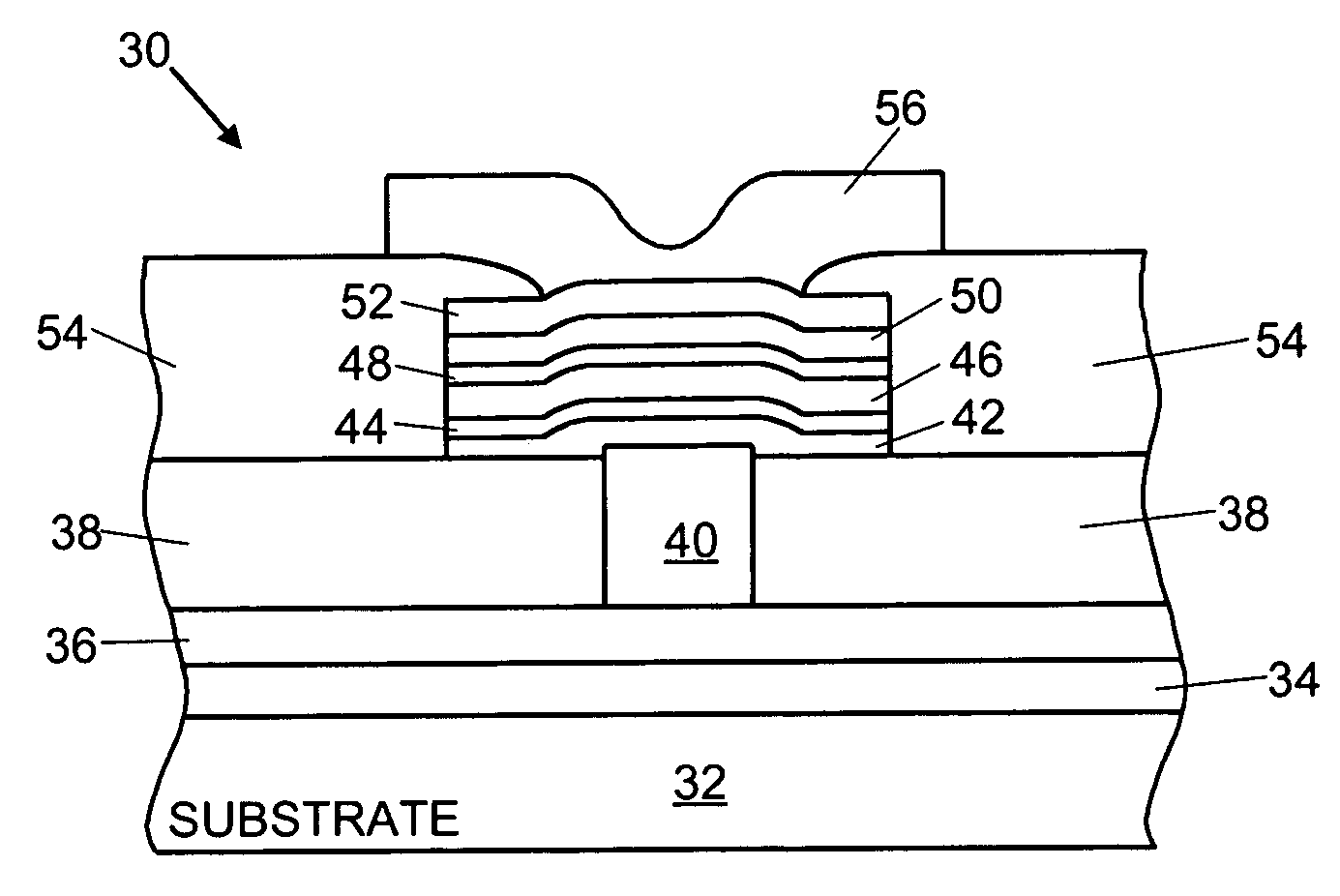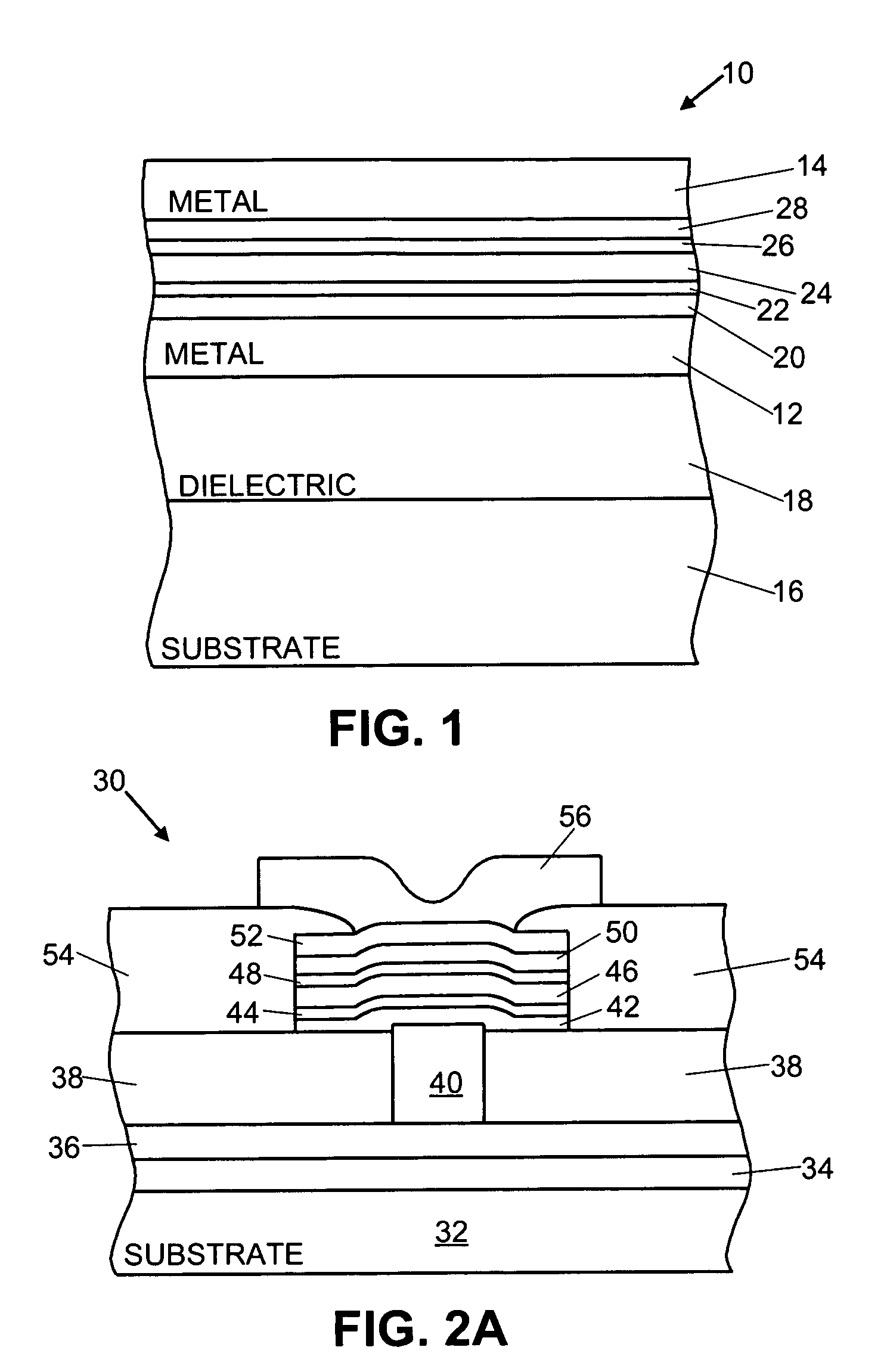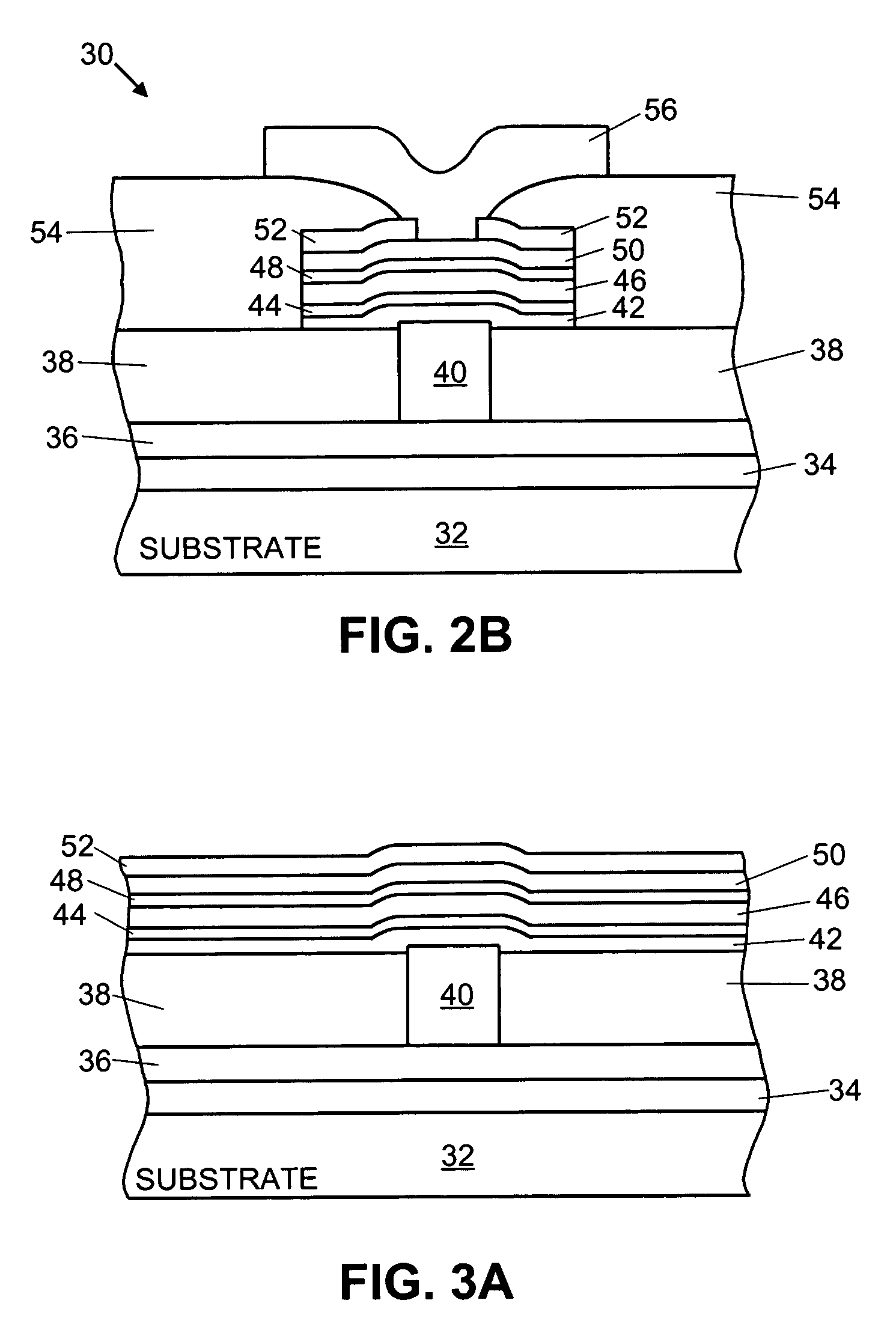Reprogrammable metal-to-metal antifuse employing carbon-containing antifuse material
a metal-to-metal and anti-fuse technology, applied in the direction of semiconductor devices, semiconductor/solid-state device details, instruments, etc., can solve the problems of low reliability during programming, dielectric materials that require complex manufacturing techniques, and sub-substrat-level anti-fuses
- Summary
- Abstract
- Description
- Claims
- Application Information
AI Technical Summary
Benefits of technology
Problems solved by technology
Method used
Image
Examples
Embodiment Construction
[0026]Those of ordinary skill in the art will realize that the following description of the present invention is illustrative only and not in any way limiting. Other embodiments of the invention will readily suggest themselves to such skilled persons.
[0027]In FIG. 1, a reprogrammable antifuse 10 according to the present invention is depicted generally in a cross-sectional view. The reprogrammable antifuse 10 is disposed between a lower metal interconnect layer 12 and an upper metal interconnect layer 14. Lower metal interconnect layer 12 and upper metal interconnect layer 14 are disposed above a semiconductor substrate 16 and an intervening insulating layer 18. The antifuse 10 has a lower Ti barrier layer 20, a lower adhesion-promoting layer 22 comprised of a material selected from the group comprising SixCy and SixNy, an antifuse material layer 24 formed from amorphous carbon or amorphous carbon doped with at least one of hydrogen and fluorine, an upper adhesion-promoting layer 26 ...
PUM
| Property | Measurement | Unit |
|---|---|---|
| thickness | aaaaa | aaaaa |
| thickness | aaaaa | aaaaa |
| thickness | aaaaa | aaaaa |
Abstract
Description
Claims
Application Information
 Login to View More
Login to View More - R&D
- Intellectual Property
- Life Sciences
- Materials
- Tech Scout
- Unparalleled Data Quality
- Higher Quality Content
- 60% Fewer Hallucinations
Browse by: Latest US Patents, China's latest patents, Technical Efficacy Thesaurus, Application Domain, Technology Topic, Popular Technical Reports.
© 2025 PatSnap. All rights reserved.Legal|Privacy policy|Modern Slavery Act Transparency Statement|Sitemap|About US| Contact US: help@patsnap.com



